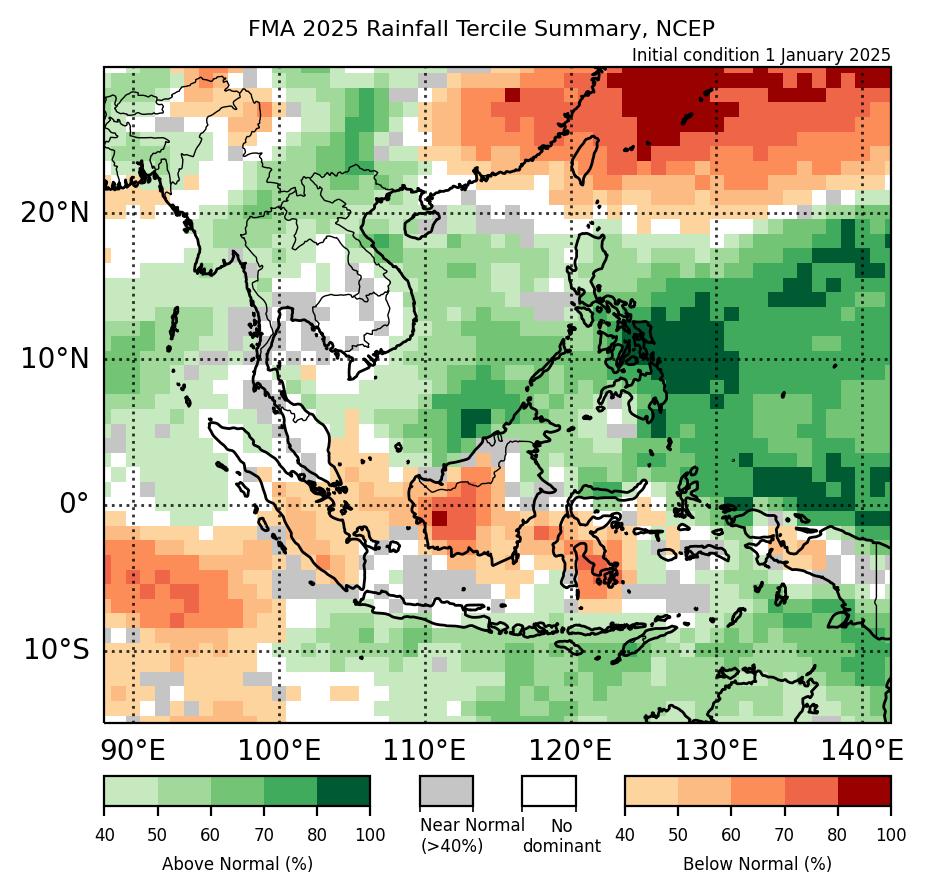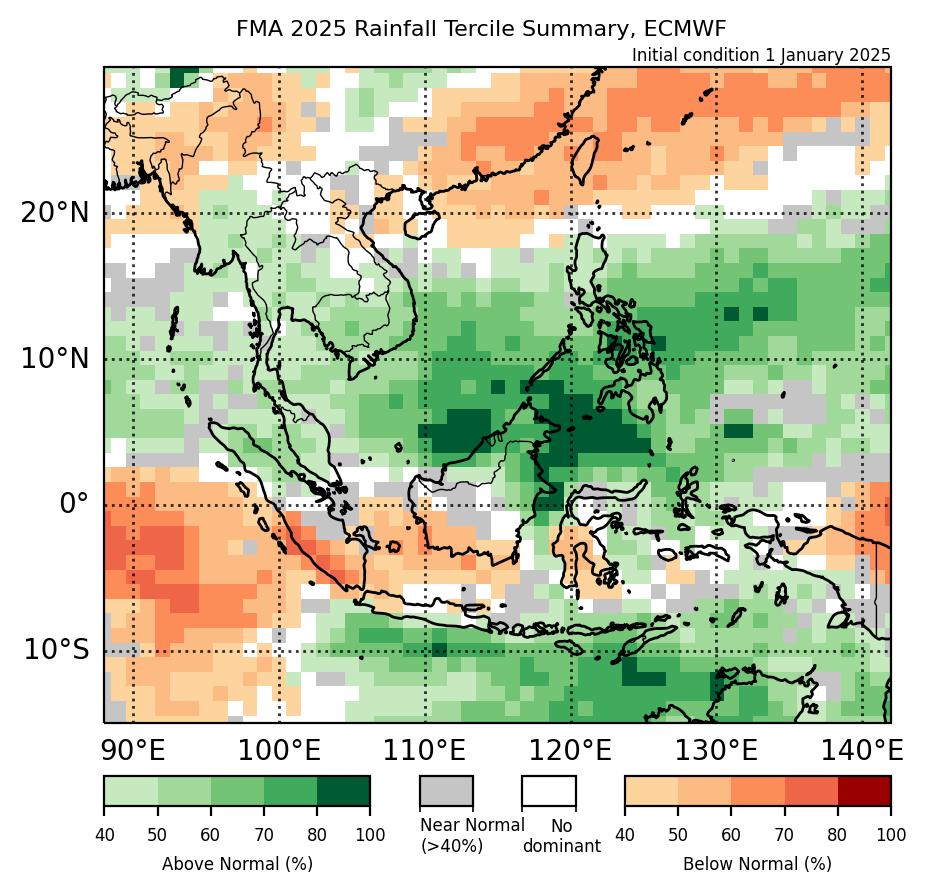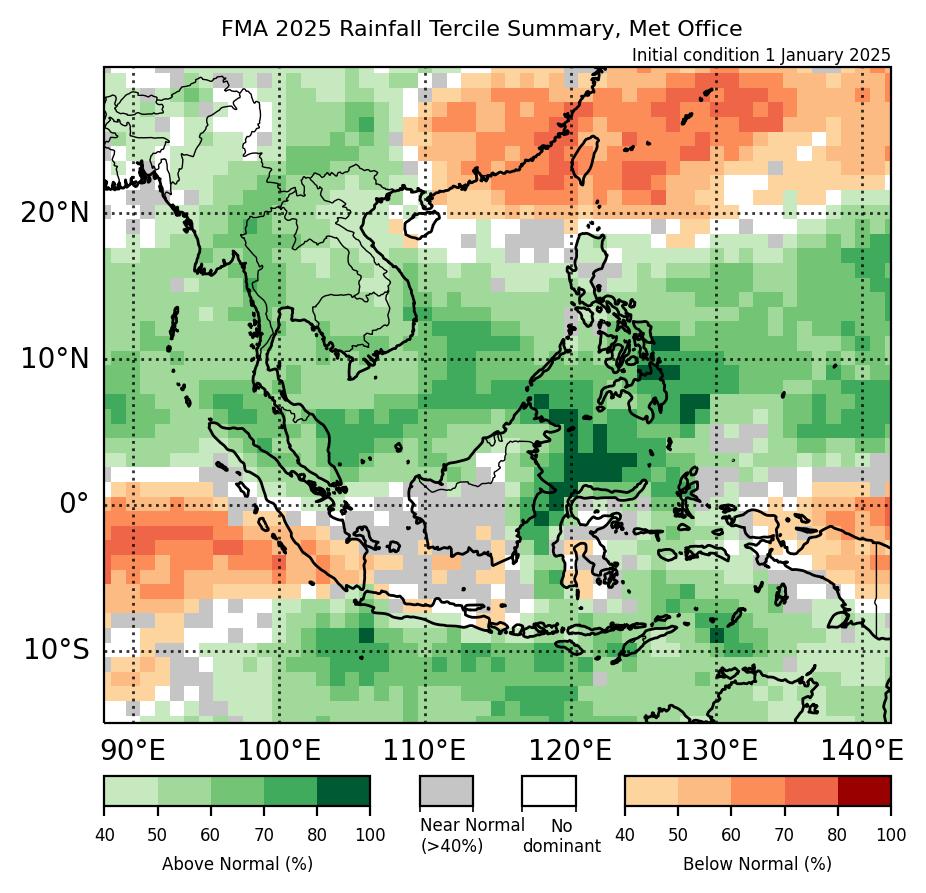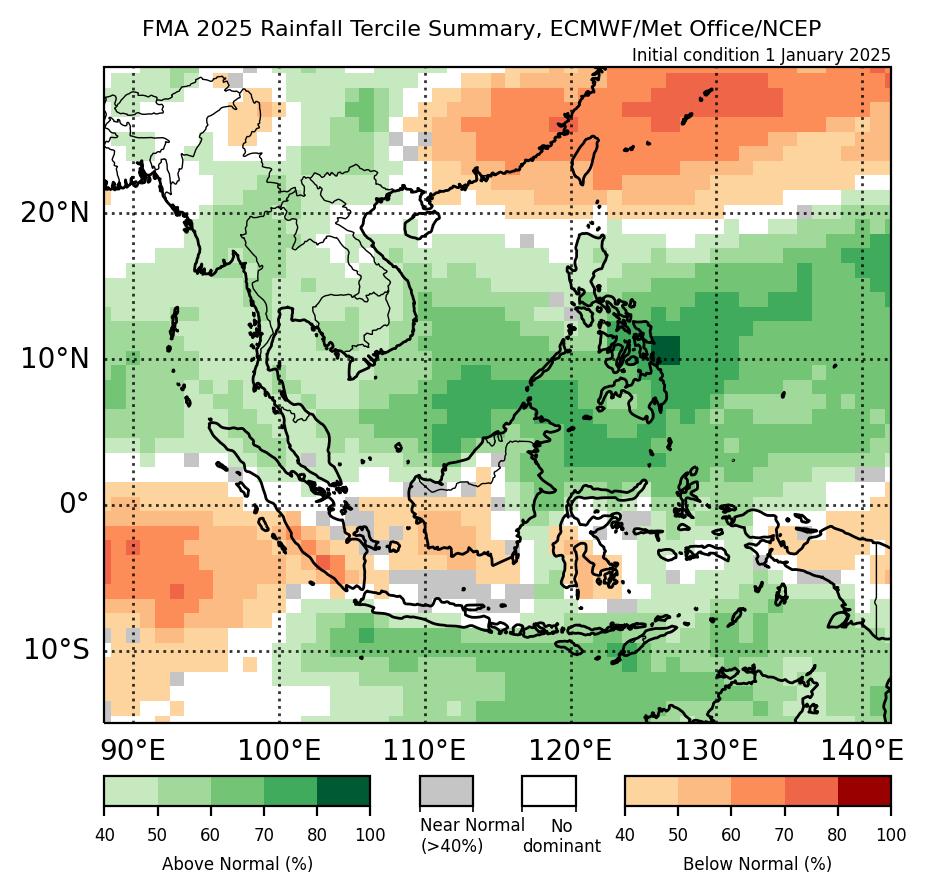Rainfall
Seasonal Rainfall Outlook: February-April 2025 (FMA)
Issued: 30 Jan 2025
For FMA 2025, above-normal rainfall is predicted over the northern half of the Maritime Continent, with below- to near-normal rainfall predicted over the equatorial region. There is also an increase in chance of above-normal rainfall over parts of Mainland Southeast Asia.
For FMA 2025, above-normal rainfall is predicted over the northern half of the Maritime Continent, based on the multi-model ensemble (Figure 4). Elsewhere, below- to near-normal rainfall is predicted over much of the equatorial region. The NCEP model (Figure 1), has the highest confidence of below-normal rainfall for this region compared to the ECMWF and UK Met Office models (Figures 2 and 3). All three models predict the highest chance of above-normal rainfall over the northeastern Maritime Continent. For the southernmost part of the Maritime Continent, no dominant tercile is predicted. Skill over the northern half of the Maritime Continent is relatively good, while skill for below-normal rainfall over the equatorial region is low to moderate.
For Mainland Southeast Asia, above-normal rainfall is predicted over most of the region, based on the multi-model ensemble (Figure 4). The UK Met Office model predicts an increased chance of above-normal rainfall over all of Mainland Southeast Asia, while the ECMWF predicts above-normal rainfall over central and southern parts, and the NCEP model predicts above-normal rainfall over parts of central and northern Mainland Southeast Asia. Model skill for above-normal rainfall is overall moderate for Mainland Southeast Asia.

Figure 1: Rainfall tercile summary predictions of NCEP model for FMA 2025 (contains modified Copernicus C3S information).

Figure 2: Rainfall tercile summary predictions of ECMWF model for FMA 2025 (contains modified Copernicus C3S information).

Figure 3: Rainfall tercile summary predictions of UK Met Office model for FMA 2025 (contains modified Copernicus C3S information).

Figure 4: Rainfall tercile summary predictions of the multi-model ensemble for FMA 2025 (contains modified Copernicus C3S information).

Figure 5: Average climatological rainfall's lower tercile boundary for FMA based on CHIRPS (Reference period: 1991-2020).

Figure 6: Average climatological rainfall's upper tercile boundary for FMA based on CHIRPS (Reference period: 1991-2020).
The qualitative outlook is assessed for the region in general. For specific updates on the national scale, the relevant ASEAN National Meteorological and Hydrological Services should be consulted.